11 Major Tyrrhenian Sea Facts
There are 12 marginal seas of the Mediterranean sea, spanning about 2.5 million square kilometres of area. One such arm of the larger Mediterranean sea is the Tyrrhenian sea.
It is situated on the western coast of Italy and covers roughly 106,000 square miles. The water body has four exits, two to the Mediterranean sea, one to the Ionian Sea, and the Ligurian Sea.
Positioned at the confluence of the Eurasian and African tectonic plates, the sea has played a crucial role in the socio-cultural and economic development of the settlements bordering it.
Throughout history, many battles have been fought for controlling this strategic water body since it facilitated trade between the continents of Asia, Africa, and Europe. In today’s world, it is an important trade route in the Atlantic Ocean.
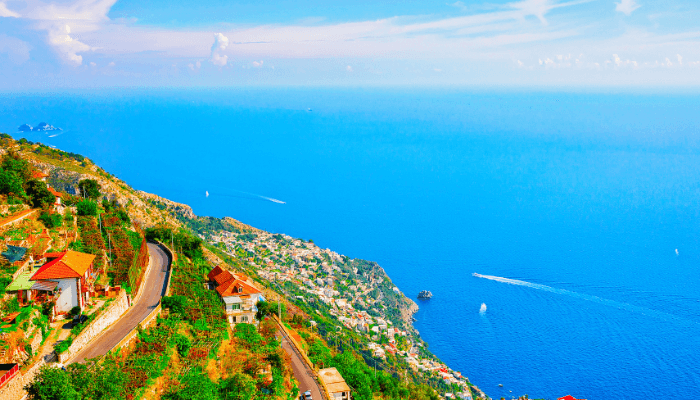
Check out the 10 fascinating facts about the Tyrrhenian Sea.
1. The Tyrrhenian Sea has many entry and exit points
The third largest marginal sea of the Mediterranean, the Tyrrhenian Sea, is located amidst the Italian Peninsula and the islands of Sardinia and Corsica. Several regions border the sea, such as Lazio, Tuscany, Basilicata, Calabria, etc. The toe area of Italy surrounds it from the southeast and the Ligurian Sea to the northwest.
The Tyrrhenian Sea has a maximum depth of 3,785 meters or 12,419 ft. It has four exit gateways, two flowing into the Mediterranean sea. One of the channels is the Strait of Bonifacio which distinguishes the island of Sardinia from Corsica, measuring about 6.9 miles in width. The biggest exit point is an unnamed waterway 290 miles wide between the islands of Sicily and Sardinia. The Corsica channel is 50 miles wide and flows between the Tyrrhenian and the Ligurian Sea through Tuscany, in northwest Italy. The fourth channel is the Strait of Messina, lying amidst the Calabria region at the southern end of the Italian Peninsula and Sicily, opening into the Ionian Sea.
2. Surrounded by numerous small islands
Several island groups are found in the Tyrrhenian Sea, including the Aeolian archipelago, Capri, Elba, Ischia, Ustica, and the Tuscan island group.
The Aeolian Islands or the Lipari islands are volcanic formations in the Tyrrhenian sea covering 3000 acres. They lie north of Sicily and are named after the god of wind, Aeolus. The archipelago consists of 7 significant islands, including Lipari, the largest among them.
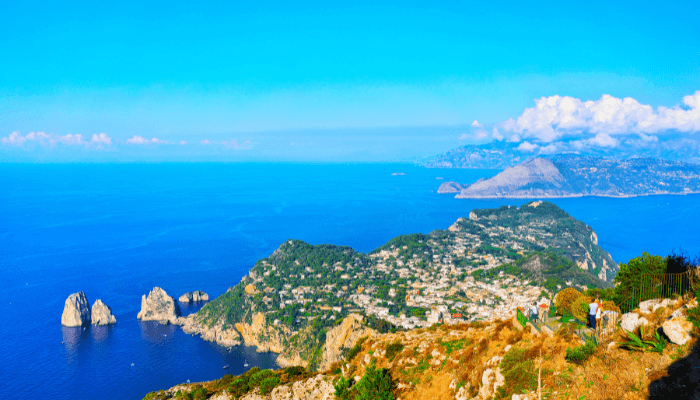
Ustica spans 3,18 square miles and is thinly populated. This small island houses a commune of 1300 people connected to the outer world through a ferry service to Palermo, Italy.
Elba is the biggest island in the Tuscan archipelago. It is situated off the coast of Tuscany and covers 86 square miles. According to Greek mythology, the Tuscan archipelago was the necklace of Venus, goddess of beauty and sensuality. She lost it while emerging from the Tyrrhenian sea. Hence, the seven islands of the Tuscan archipelago symbolize the pearls she lost.
3. Derives its name from the Etruscan people of Italy
The Tyrrhenian Sea got its name from a tribe of non-greek sea-faring communities. Tyrrhenian was taken from a Greek name for Etruscan people who might have migrated from Lydia in West Asia. They were led by Prince Tyrrheus, a founder of the Etruscan League. Those who settled on the Tuscany coast called the Tyrrhenian Sea the Sea of Etruscan.
They established the Etruscan civilization dating back to 900 BC. It covered the Tuscan region, western Umbria, north Lazio, Lombardy, Veneto and Campania. However, the empire was short-lived. The Etruscan-Roman wars led to the former’s assimilation into the Roman Empire in the 4th and 5th centuries BC.
4. Divided into two underwater basins
The Tyrrhenian sea spans 275,000 km2 with an average depth of 2000 m. It drains into Italy and France. The sea lies at the confluence of Eurasian and African tectonic plates, which makes it seismically active. Its underwater geography consists of two basins, the Marsili plain and the Vavilov plain. Both the plains are situated on either side of an underwater sea bridge called Issel Bridge.
The Marsili plain is a submarine seamount dating back to the Pliocene period. According to research, it is a relatively young geological formation that can contribute to geothermal energy generation. The Vavilov plain contains the deepest point of the Tyrrhenian sea at an underwater depth of 3785 m. It was formed as an arc basin in the Miocene period and spread from the northwest to the southeast. These two basins include the Tyrrhenian Basin, a sedimentary formation characterized by numerous active volcanoes, hills, irregular plains, and mountains like Mount Marsili.
Mount Marsili is an underwater volcano around 175 km south of Naples. It is 3000 feet tall, and its peak is 445 m below sea level. It has never erupted. However, volcanologists argue that it is made of unstable rocks. In 2010, it was announced that the volcano could erupt anytime, leading to landslides and huge destructive tsunamis threatening the Mediterranean nations.
5. Enjoys great historical significance
The Tyrrhenian Sea played a crucial role in Mediterranean empires’ cultural and economic growth, including the Roman and Ottoman Empires. It was the backbone of international trade in the medieval period, and European powers struggled to control this area. It allowed vessels to trade with Africa, Asia, Europe, and the Middle East. Due to its advantageous geographic position, it saw many merchants and sailors. Coastal settlements came up and flourished as a result of prosperous trade. However, it was fraught with dangers as pirates continuously tried to gain complete control of its waters.
Additionally, it was important in the Napoleanic period, which began in the late 18th century. Napoleon was exiled to the Island of Elba in 1814 and used the sea to launch his warship, marking his return to Paris.
6. Rich in marine biodiversity
Many plants and animals live and thrive in the Tyrrhenian sea waters. The northern part of the sea is a reserved marine region, protected as an essential component of the Pelagos Sanctuary for marine mammals of the Mediterranean.
The Pelagos Sanctuary covers 87,500 square kilometers and is managed by the authorities of Italy, France, and Monaco. It is a sub-section of the larger Mediterranean marine ecosystem, marked by increased productivity. It results from numerous mechanisms, including the mingling of coastal waters, the delayed impact of winter mixing, the frontal region, and the phenomenon of upwelling.
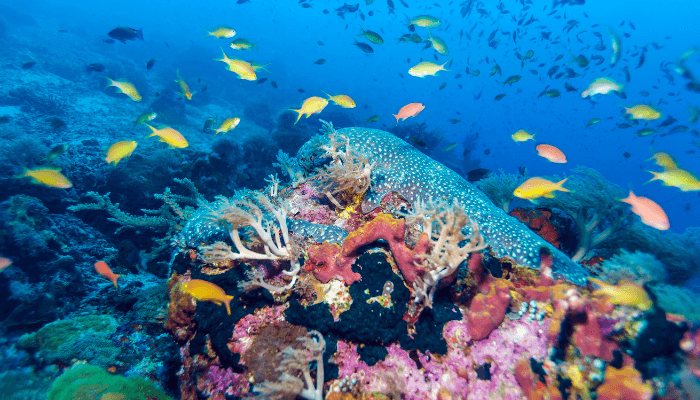
According to research, over 8550 macroscopic animal species are found in the sanctuary’s waters, accounting for 5 to 18 percent of the global marine species. The refuge extends to the nearby Ligurian sea.
7. Supports the regional fisheries sector
The fishing industry in the Tyrrhenian sea relies on enormous populations of Amberjack, sea bass, swordfish, Garrick, Grouper, Dentex, ad Snapper. However, the most famous and wanted fish in the Sardinian sea is the Bluefish tuna, relished throughout Italy and the Mediterranean. It is considered a significant delicacy and is in much demand. It is the largest species of tuna that can attain a length of 3.7 m.
Bluefish tuna can be seen from the beginning of May till the end of October. They are massive fish that can weigh over 600 kilograms. Due to their size, the best method of catching them is trolling with baits like sardines, squid, or other small fish. Local fishermen suggest the use of lifting techniques for catching the Bluefish tuna.
Not all fish can be caught for food. Hence, the marine reserve protects many exotic and endangered species, including long-finned pilot whales, bottlenose dolphins, sperm whales, and fin whales.
8. Experiences a subtropical climate
The Tyrrhenian Sea has a subtropical Mediterranean climate characterized by warm and dry summers. The temperatures range from 28 to 34 degrees, making it ideal for swimming and relaxing on the beaches. In winters, the coastal regions experience mild rainfall with a mean water temperature of around 23 to 13 degrees, which is also pleasant. Hence, the coastal areas surrounding the Tyrrhenian sea are filled with tourists throughout the year.
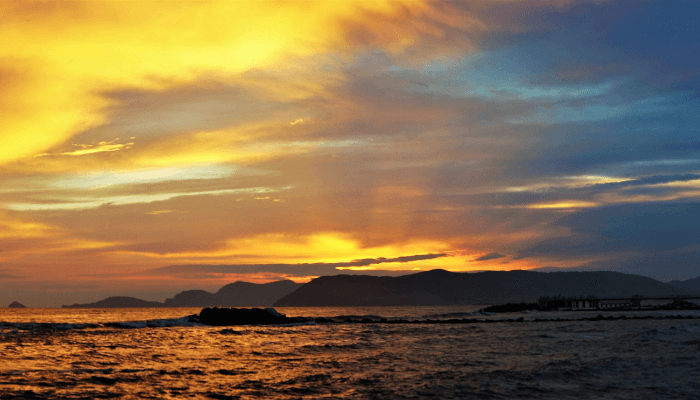
Also, the Tyrrhenian sea is crucial for winter deep water formation in the northwestern Mediterranean region via the waters entering the Ligurian Sea through Corsica Channel. The water is relatively cool along the east coast of Corsica and Sardinia. It is warmer along the southern Italian coastline.
9. Has a thriving cruise ship and tourism industry
The Tyrrhenian sea coast is dotted with numerous exotic resorts and hotels. Popular attractions include the Aeolian Islands, Sicily, Palermo, Naples, and many hidden gems. Calabria, also known as the toe of Italy, is one such city. It is picture-perfect, endowed with one of the most beautiful Italian beaches. Interestingly, it is not that popular among tourists, and one can expect to find affordable hotels here.
There is much to explore in Calabria, including the beach of Tropea, winning the 2021 Italy’s most beautiful town award. Pizzo Calabro is known for its historic city center and amazing gelato, while Scilla is a mesmerizing fishing village.
10. Lined with important cargo ports connecting major facilities worldwide
The Tyrrhenian Sea boasts several trade routes linking Asia, Europe, the Americas, and Africa. The major ports on its coast include Naples, Palermo, Salerno, Tripani, Gioia Tauro and Civitavecchia.
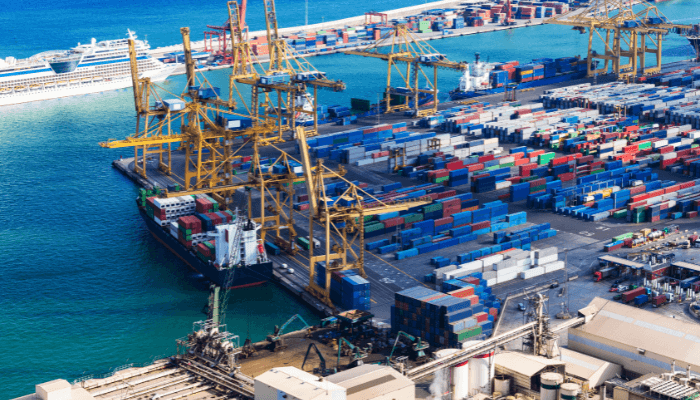
Gioia Tauro is the largest seaport in southern Italy, ranking 9th in Europe and 6th in the Mediterranean. Additionally, the Civitavecchia port is also known as the Port of Rome and is the primary facility on the western coast of Italy, approximately 70 km northwest of R me. It has four basins and is protected by an elongated outer mole known as Antimurale Colo bo. It provides a safe and sheltered harbor and caters to general cargo vessels, bulk carriers, oil tankers, ferries, and cruise ships.
11. An ecologically endangered zone facing environmental threats
The Tyrrhenian Sea faces many environmental threats due to trade and tourism. Millions of people flock to the sea’s waters for fishing, snorkeling, sailing, and swimming, leaving behind waste, most of which is dumped into the seas. Increasing consumer demand for fish and other seafood stresses the fragile ecosystem as fishers catch enormous quantities of fish annually to satisfy the demand.
Overfishing is unsustainable as it prevents the fish from repopulating again, ultimately decreasing their numbers, affecting the entire food chain, and reducing food availability for the top predators.
Another significant threat is plastic waste which chokes and harms marine life in multiple w ys. Fish swallow the plastic, which ultimately enters the human body. Many coral reefs in the Mediterranean are dying due to plastic; hence there is an urgent need to clean the waters of the Tyrrhenian Sea and switch to eco-tourism practices to protect this unique marine habitat.
You might also like to read
- 10 Important Facts About The Cape Of Good Hope
- 13 Important Bay Of Bengal Facts
- 9 Facts About Gulf of Panama
- 10 Facts About The Largest Peninsula In The World
Disclaimer :
The information contained in this website is for general information purposes only. While we endeavour to keep the information up to date and correct, we make no representations or warranties of any kind, express or implied, about the completeness, accuracy, reliability, suitability or availability with respect to the website or the information, products, services, or related graphics contained on the website for any purpose. Any reliance you place on such information is therefore strictly at your own risk.
In no event will we be liable for any loss or damage including without limitation, indirect or consequential loss or damage, or any loss or damage whatsoever arising from loss of data or profits arising out of, or in connection with, the use of this website.
Do you have info to share with us ? Suggest a correction
Disclaimer :
The information contained in this website is for general information purposes only. While we endeavour to keep the information up to date and correct, we make no representations or warranties of any kind, express or implied, about the completeness, accuracy, reliability, suitability or availability with respect to the website or the information, products, services, or related graphics contained on the website for any purpose. Any reliance you place on such information is therefore strictly at your own risk.
In no event will we be liable for any loss or damage including without limitation, indirect or consequential loss or damage, or any loss or damage whatsoever arising from loss of data or profits arising out of, or in connection with, the use of this website.

About Author
Zahra is an alumna of Miranda House, University of Delhi. She is an avid writer, possessing immaculate research and editing skills. Author of several academic papers, she has also worked as a freelance writer, producing many technical, creative and marketing pieces. A true aesthete at heart, she loves books a little more than anything else.
Latest Maritime Knowledge Articles You Would Like:
Subscribe To Our Newsletters
By subscribing, you agree to our Privacy Policy and may receive occasional deal communications; you can unsubscribe anytime.















